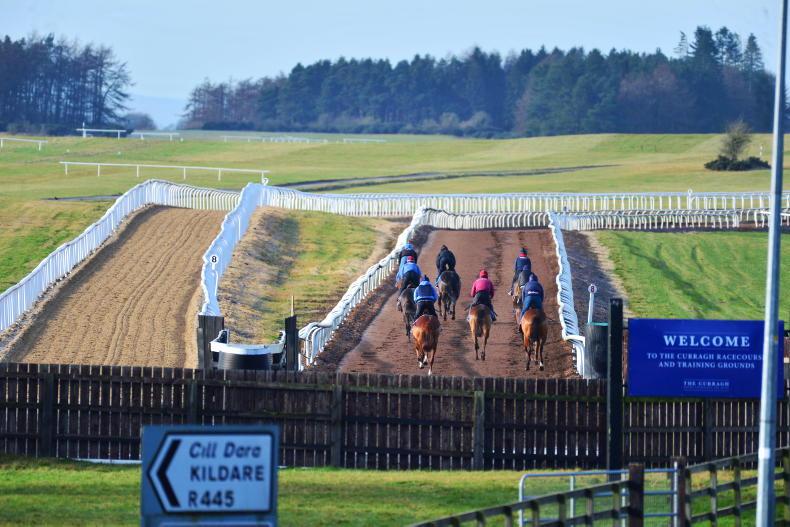AS the flat season well and truly heats up, we take a look this week at the Curragh, ‘where champions are made’.
The Association of Irish Racecourses (AIR) has dedicated this week’s column to the Curragh Racecourse in recognition of their upcoming landmark. The Co Kildare venue celebrates the 100th running of the Group 1 Tattersalls Irish 2000 Guineas next weekend.
The official home of Irish flat racing will host the feature which marks the first of Ireland’s classics on Saturday, May 22nd. The race is run over one mile and is confined to three-year-old colts and fillies only. On Sunday, all eyes will be fixed on the Group 1 Tattersalls Irish 1000 Guineas and the Group 1 Tattersalls Gold Cup. Although it is a shame that such an historical fixture will be run behind closed doors, both days will be aired live on Racing TV and RTÉ Racing.
Tattersalls has enjoyed a long-standing association with the Curragh Racecourse since they first sponsored the Gold Cup in 1985. They added the Irish 2000 Guineas in 2013 and the Irish 1000 Guineas in 2015 to their successful sponsorship portfolio.
Under the watchful eye of chief executive officer Pat Keogh and his exceptional team, the Curragh is one of the most famous racing facilities in the world. It is the home of flat racing in Ireland and hosts all five classic races each year.
While these are he big races to look forward to, it is important to mention that the Curragh hosts 20 meetings each year. It now also boasts the magnificent Aga Khan Stand which we are all looking forward to visiting again in the not too distant future.
Making champions
The Curragh’s tagline ‘where champions are made’ is never more appropriate or exciting a prospect than now, as we build-up to the inaugural weekend of classic racing for this season. Races such as these are key to the making of champions. So too are the Curragh training grounds, where many champions have been prepared for glory.
As many of us drive past the Curragh on the way to or from Dublin, perhaps the sheer size and scale of the Curragh operation is not widely considered or indeed recognised. So in addition to celebrating the centenary of the Irish 2000 Guineas, let’s take a closer look at the Curragh training grounds.
The grounds offer 80 miles of gallops over 1,500 acres. The natural turf gallops, which have been nurtured for centuries in a unique environment, are complemented by a range of artificial surfaces which can be used for all types of work during all seasons. The range of gallops provides trainers with great scope to tailor each horse’s work to suit their individual needs, with gallops varying in length, gradient and surface.
World-class facilities
Facilities include eight miles of all-weather gallops, a seven-furlong round woodchip, five-furlong straight sand and fibre, nine-furlong round sand and fibre, combined with the famous Old Vic nine-furlong woodchip gallop and the Free Eagle nine-furlong sand and fibre gallop. These are the perfect combination of world-class facilities any trainer could hope for in the heart of the thoroughbred county.
The Curragh is home to over 50 trainers situated close to the gallops who avail of the excellent facilities. To ensure that National Hunt trainers are well catered for, the training grounds have an all-weather schooling strip as well as extensive options over both hurdles and fences on grass.
The training grounds are maintained and operated by Pat Kelly and his skilled and dedicated team 365 days a year. Trainers who regularly use or visit the Curragh training grounds can be sure of its continuity even during extreme weather conditions.
